Five pairs of eyes, three jaws and two hundred seventy teeth ... A predator weighing about one gram and about twelve centimeters long, feeds on blood and replaces medicines ... Medical leech is the most common species for breeding out of five hundred existing in nature. And the only one useful to humans. Only a few farms breed medical leeches. However, at home, it is also possible to achieve the reproduction of these worms.
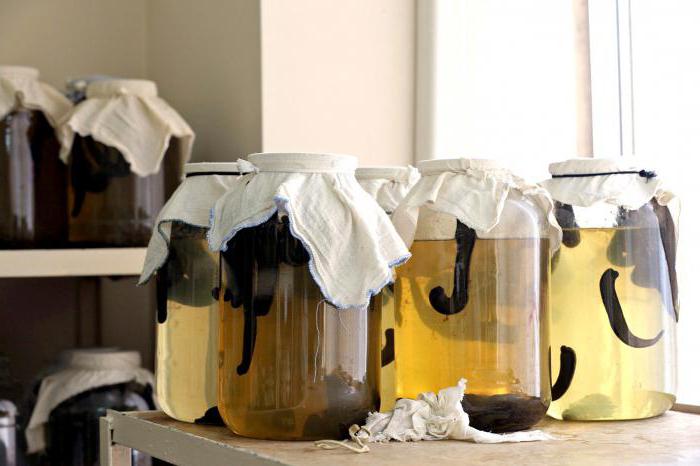
Natural healers
With hirudotherapy, leeches, sucking to the body, suck blood. But the therapeutic effect is not at all in this process. The important thing is not that the leeches suck, but what they give. Hirudin is a unique enzyme that is kept secret by the saliva of a medical leech. Through bites, this substance enters the human body, providing a treated property. In general, a leech isolates sixty-four types of amino acids and forty types of enzymes that are beneficial to humans.
Specialists managed to artificially remove hirudin, but it only works for three days, while natural is effective for three months. Hirudin and other leech enzymes have anti-inflammatory, analgesic, immunostimulating effects, as well as normalize lipid metabolism in the human body.
Hirudotherapy is used to treat diseases of the endocrine and digestive systems, gynecological ailments, diseases of the joints and respiratory organs.
Leeches are a natural medicine without a side effect. Their size does not matter, all individuals are useful and safe. Usually, doctors prescribe nine sessions of hirudotherapy every six months. The interval between sessions should be three to four days.
Sucking, the leech increases in size up to ten times. An individual weighing from one to three grams can suck out about fifteen milliliters of blood.
Breeding leeches on special farms
In Russia, there are hardly a dozen centers for growing medical leeches that work legally. Their capabilities do not cover 50% of the demand of hirudotherapists. A large leech breeding farm operates, for example, in the Moscow region. There is a large biofactory in the Saratov region.
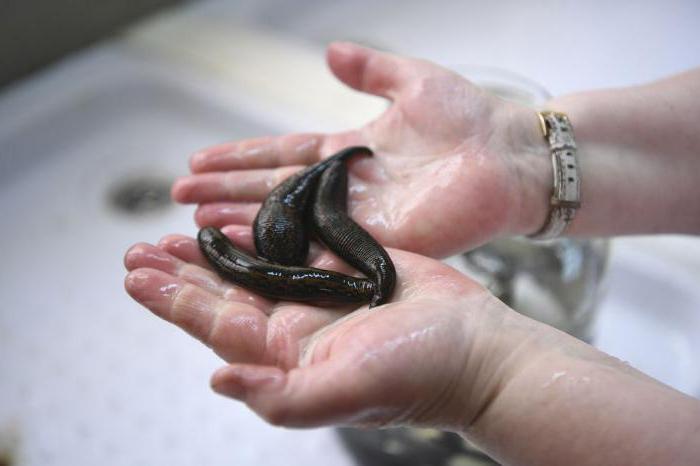
The cultivation of natural healers is carried out under the supervision of specialists - "leech growers." They monitor the process, create comfortable conditions for breeding and its growth.
On farms, leeches live in ordinary glass three-liter jars of 200-300 pieces. Vessels are stored in rooms protected from sunlight and any odors. The aromas of medical leeches cannot be tolerated either during growth or during treatment.
Some individuals go to broodstock. Leeches - hermaphrodites, in an even amount of up to 16-18 pieces they are placed in banks for reproduction. After fertilization, light rings appear on the body of leeches. After two weeks, the queens are laid in peat. Here they release foam, forming a cocoon that will ripen for about three months.
For breeding choose the largest individuals. They are grown for almost two years, fattened to a weight five times the weight of an ordinary commodity.
When the babies crawl out of the cocoon, they are fed for about five months. Then - three months of a hunger strike so that individuals would be ready to fulfill their therapeutic function for sale.
In general, breeding medical leeches is an artificial cultivation, for which sometimes it is necessary to plant brothers from the will. Because with each generation, farm leeches are weakening and becoming smaller.
Before sending leeches on orders, they are subjected to a medical examination and an activity test.A leech is considered fit if it is ready to stick.

Leech business
Breeding medical leeches as a business is a good option for earning income without serious investment. You have to register as an individual entrepreneur or legal entity. But the process of obtaining the necessary license from the Federal Service for Supervision in the Field of Health will bring more trouble. A leech is equated with a medical preparation, therefore its cultivation requires the accompaniment of special documents.
The starting batch of leeches can be ordered at specialized farms. The selling price is usually from thirty rubles per individual.
If, when planning a business, you decide to save money and catch leeches in a pond, then, most likely, spend more than get income. Water leeches are not suitable for hirudotherapy.
The leech breeding business is recommended to start with 500-600 individuals. When purchasing leeches in a smaller amount, profitability is doubtful.
Large bio-farms can grow seven to eight million leeches per year.
Conditions for growing leeches
In the private leech business, the same conditions that are respected on farms must be ensured. For each developmental stage of an individual, you will need separate containers:
- Ripening of a cocoon in boxes with peat.
- Growing fry in glass jars or plastic containers.
- Aquariums, banks or containers for adult worms.
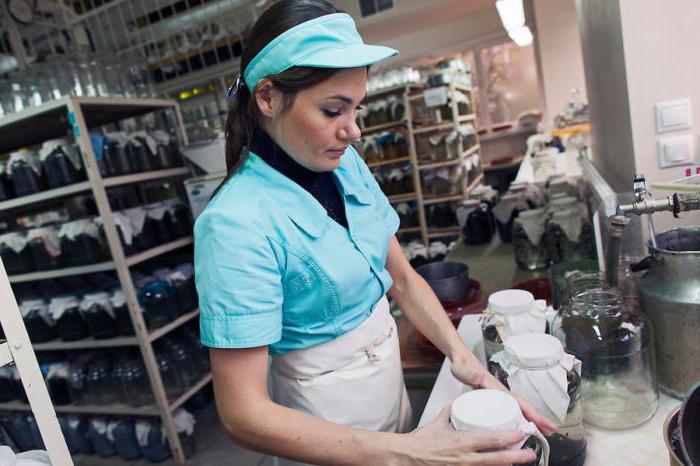
It is important to monitor the water in the vessels where leeches are located. In order not to miss the moment of pollution or the formation of mucus, it is better to use aquariums or glass jars. Some grow individuals in buckets of food-grade plastic. Also an acceptable option, but transparent glass vessels are preferable. Cans or buckets should be covered with a piece of cloth or a perforated lid.
Without maintaining a certain state of water and microclimate in the room, leeches can die. Humidity should not be lower than eighty-eighty-five percent, the temperature of water and air - twenty-four - twenty-seven degrees.
Water in any containers where leeches live must be changed at least twice a week. Aerobic filters will be required to ensure water circulation.
Leeches need to be fed once a month. They feed on bovine blood.
Leech Nutrition
The only suitable food for leeches in the growing process is bovine blood. You can get it at meat processing plants, but watch for the quality of the feed. Blood should be from a healthy animal.
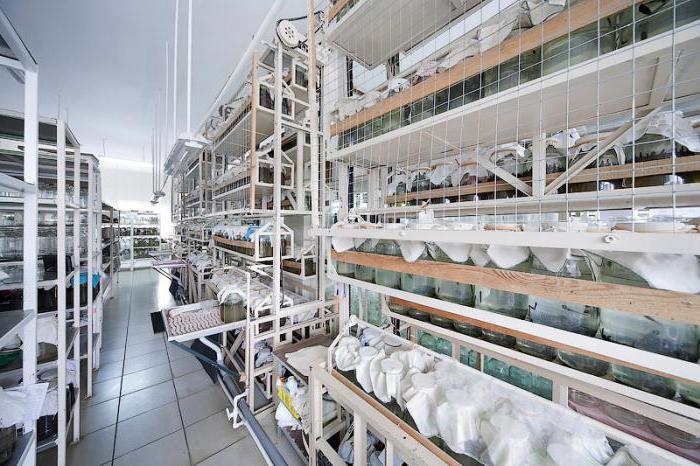
Where to promote the goods
Given the healing properties of medical leeches, we can assume that they are in demand in medical institutions and among private hirudotherapists, as well as in pharmacies. The emphasis should be placed on this category of consumers.
Transportation Features
So that leeches in integrity and in complete readiness to treat are delivered to the customer, prepare conditions for them. It is recommended to transport a batch of leeches in a glass container filled with two-thirds of the water. Use only settled water.
During transportation, it is necessary to ensure a comfortable temperature, protect containers from sunlight and odors.
How to deliver leeches to a customer
If the distance to the customer is not more than one hundred kilometers, then leeches can be delivered in plastic containers covered with a perforated lid. For each capacity of three liters - two hundred leeches.
If the distance is more than one hundred kilometers, it is more convenient to use bags of fabric. For their manufacture it is better to use calico, the size of one bag is thirty by twenty centimeters. In a bag you can place up to three hundred leeches.
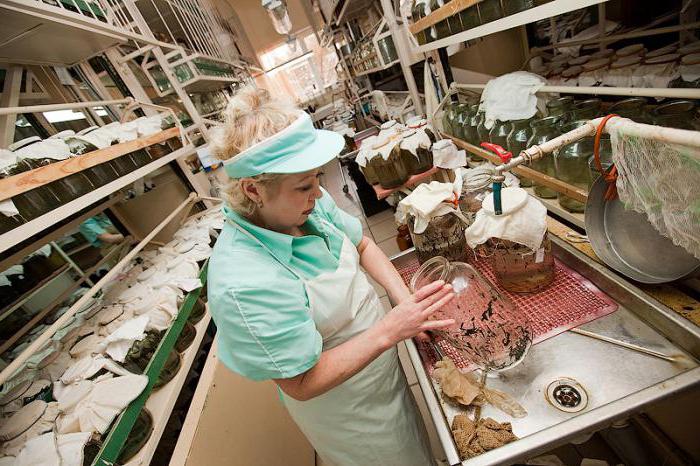
The bag should be wet. You can tie it with ordinary stationery rubber and wrap it in wrapping paper. It is better to carry pouches in cardboard boxes. Under such conditions, leeches can withstand a two-day trip.
Keep in mind that leeches are very sensitive to microclimate changes.At the slightest deviation from the conditions of detention or transportation, they may die.
No special machinery and equipment is used in the process of growing individuals. All transplant and capture work must be carried out manually.
Home breeding
Breeding leeches at home for beginners may seem time-consuming. However, if you strictly follow the recommendations, then caring for pets will cease to be troublesome.
After delivery, put the leech in a container made of food-grade plastic half full of water. Water can be piped, but left standing for about two days so that chlorine leaves. Leeches usually tolerate transportation if it is organized correctly. But sometimes a sick individual may be in the party. Recognizing it is quite simple: a non-viable leech will be almost without movement in the center of the tank.
After you make sure that there are only therapeutic leeches left, move them to a jar of water. Cover the container with a napkin. Use only clean rubber gloves. Active leeches will contract in the muscles if you gently squeeze the individuals in the palm of your hand.
How to feed leeches at home
Nothing. Sense will be only from hungry leeches. In a hunger strike they can live for six to twelve months. During this time, they are usually already used in therapy. Therefore, do not be preoccupied with worm nutrition issues, and do not listen to ridiculous advice on the need to sweeten sugar leeches' habitat. Do not get thin.
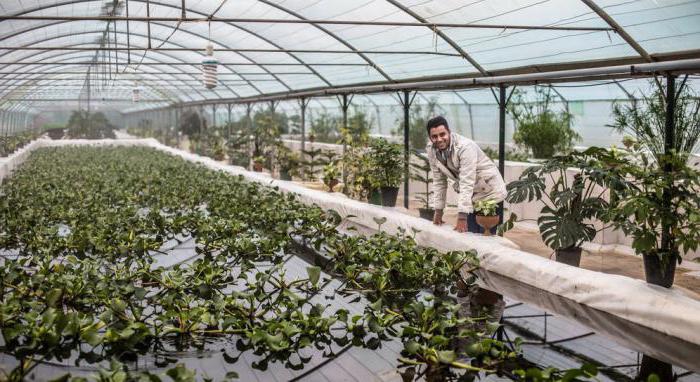
But the microclimate in the room is worth watching. Room temperature should be maintained, banks with leeches should be stored in a shady room. Water needs to be changed every three to five days, it is well filtered and it is enough to saturate with oxygen. Do not be scared if the water gets cloudy - this is the result of the release of leech waste products.
Breeding leeches at home as a business
Medical leeches are small, medium and large. Breeding leeches at home begins with the order of large individuals that can bring offspring. As soon as you receive delivery with a batch of leeches, feed them. Then place in banks of individuals in pairs, no more than 18 worms in a vessel. A month later, light rings should appear on the leeches - a sign of fertilization. Soon they need to be moved to peat.
In peat leeches lay a cocoon in which from fifteen to twenty fry ripen. With a hundred leeches-queens you can get a thousand - two thousand individuals.
If you are not going to grow leeches for sale, but want to use them for your treatment, then it will be right to consult a doctor before starting therapy.